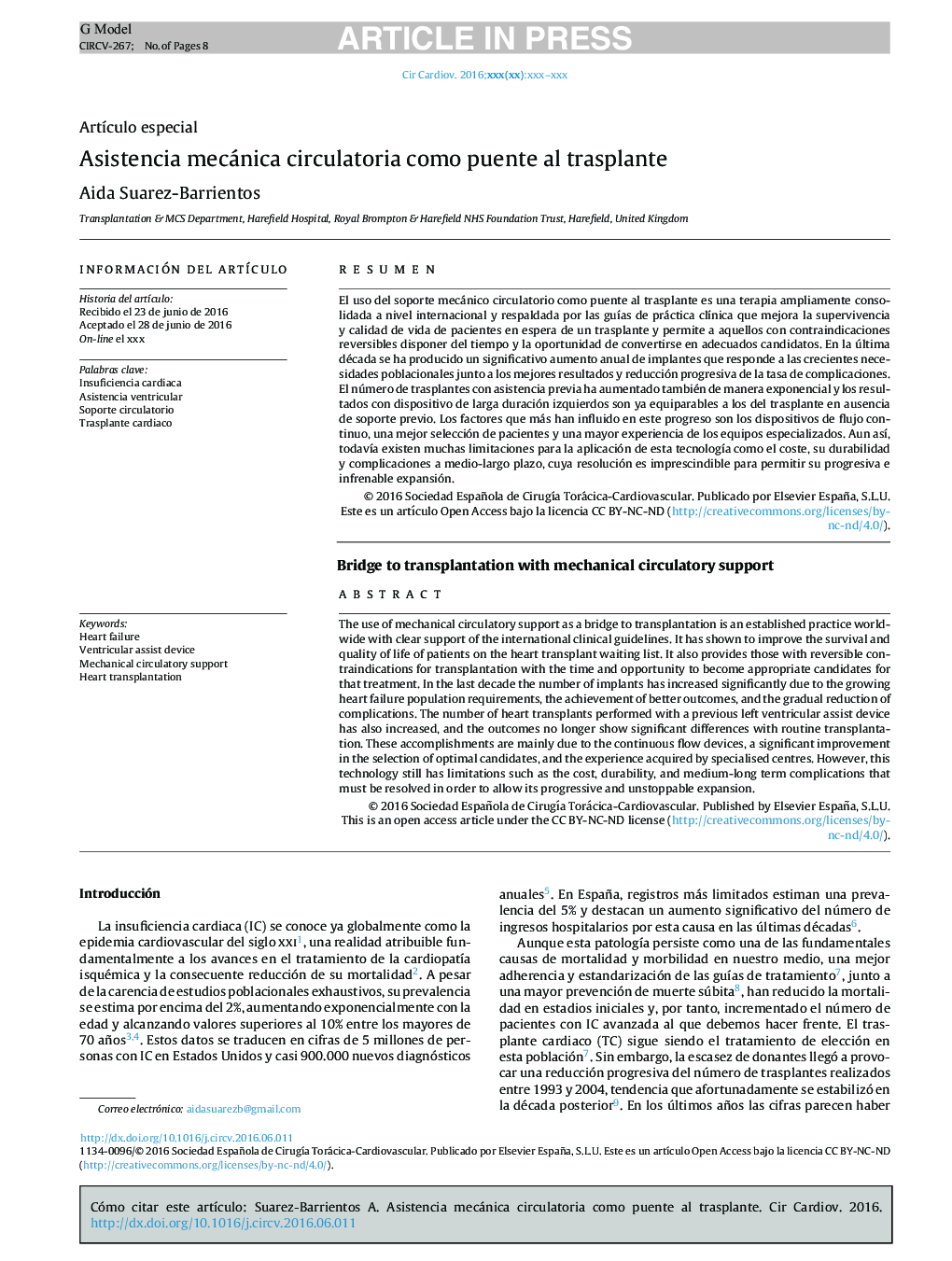| Article ID | Journal | Published Year | Pages | File Type |
|---|---|---|---|---|
| 5601395 | Cirugía Cardiovascular | 2016 | 8 Pages |
Abstract
The use of mechanical circulatory support as a bridge to transplantation is an established practice worldwide with clear support of the international clinical guidelines. It has shown to improve the survival and quality of life of patients on the heart transplant waiting list. It also provides those with reversible contraindications for transplantation with the time and opportunity to become appropriate candidates for that treatment. In the last decade the number of implants has increased significantly due to the growing heart failure population requirements, the achievement of better outcomes, and the gradual reduction of complications. The number of heart transplants performed with a previous left ventricular assist device has also increased, and the outcomes no longer show significant differences with routine transplantation. These accomplishments are mainly due to the continuous flow devices, a significant improvement in the selection of optimal candidates, and the experience acquired by specialised centres. However, this technology still has limitations such as the cost, durability, and medium-long term complications that must be resolved in order to allow its progressive and unstoppable expansion.
Keywords
Related Topics
Health Sciences
Medicine and Dentistry
Cardiology and Cardiovascular Medicine
Authors
Aida Suarez-Barrientos,
